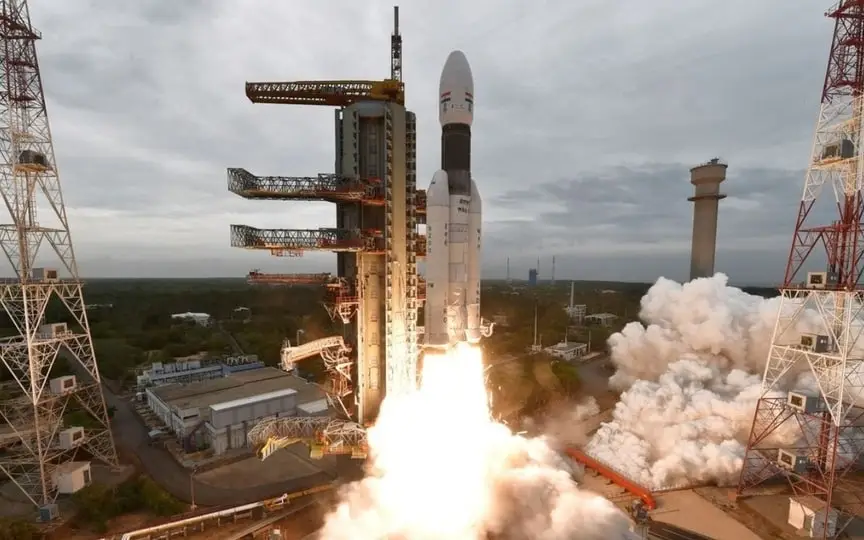ISRO’s ambitious goal to transform space missions through advanced launch vehicles
The Indian Space Research Organisation (ISRO), renowned for its economical and dependable space missions, is on the verge of a major advancement with its forthcoming advanced launch vehicles. These advancements hold the potential to increase payload capacities and incorporate reusability, ushering in a fresh era of space exploration and satellite deployment.
Before delving into the technical advancements of these launch vehicles, it is important to understand what happens during a satellite launch. The process begins with a rocket that consists of various components such as the payload (satellite), propulsion modules (fuel tanks and engines), and several stages designed to separate during liftoff. When the rocket’s engines fire, it lifts off and sheds weight by detaching used stages in a process called staging. This function allows the remaining parts of the rocket to continue to accelerate. The satellite, housed in a shroud (protective nose cone), remains protected from atmospheric drag and heat. When the rocket reaches the edge of space, the shroud is thrown away, revealing the satellite. Once the desired orbit is achieved, the satellite is gently released from the rocket’s final stage, ensuring its precise placement in the intended orbit. This methodical order is vital to the successful placement and operation of the satellite in space.
One of the major upgrades is in LVM3 (Launch Vehicle Mark-3), ISRO’s heavy launch vehicle. This is the same launch vehicle that successfully carried Chandrayaan 3 to the moon’s south pole. LVM3’s current payload is 4 tons for Geostationary Transfer Orbit (GTO) and an impressive 8 tons for Low Earth Orbit (LEO). With the introduction of a semi-cryogenic engine called the SC120, payload capacity will further increase, enhancing LVM3’s ability to meet the growing needs of the global commercial launch services market. This progress is in line with the space reforms announced by the Government of India, which will enable the Indian industry to manufacture space vehicles in a comprehensive manner.
As part of ISRO’s commitment to remain competitive and relevant in the market, a public private partnership model with NewSpace India Limited (NSIL) has been launched. The goal of this collaboration is to manufacture LVM3 to meet the global demand for LEO communication satellites and mega-constellations. The upgrade of LVM3 promises great opportunities and opportunities to conquer this niche market in the coming years, strengthening ISRO’s position as a leader in space technology innovation.
The LVM3 is further complemented by a new upgraded cryogenic C32 engine, which adds 484 kg of payload mass. Combined with the SC120, this upgrade boosts the LVM3’s capacity, making it capable of carrying an impressive 5.1 tonnes for the GTO. This represents a significant increase from its current capacity, making ISRO a further competitive player in the global space arena.
In another major development, ISRO is focusing on the LM110 LOX-Methane engine. The motors, called “Softcryo” motors, are designed to be throttled from 60 to 110%. This capability provides greater control and efficiency, which is critical for precision satellite deployment and interplanetary missions. LM110 motors are designed not only for efficiency, but also for reusability. They are expected to be reusable up to 20 times. This feature is in line with global trends in space technology and emphasizes sustainable and cost-effective space exploration.
The design of the LM110 is optimized for recovery and reuse and integrates advanced manufacturing techniques such as additive manufacturing. This approach is in line with ISRO’s vision of developing technology that is both cutting-edge and environmentally conscious.
In the future, ISRO is also planning a Next Generation Launch Vehicle (NGLV). This ambitious project features a LOX Methane co-core amplifier with clustered motors, meaning that more than one motor is used at this stage, supplemented by fixed strap-on amplifiers.
The NGLV is proposed to have different variants to meet different mission requirements. These include a 17-tonne payload capacity for 500km Low Earth Orbit (LEO) in its expendable version, which scales to a massive 48.01t for LEO. Recycled versions of the NGLV are also in the works, with a capacity of 18,825 tons and 28.39 tons for LEO. It is proposed to use a payload capacity of 9.5 tons for the tasks of the geostationary transmission line.
These advancements underscore ISRO’s commitment to pushing the boundaries of space technology. The deployment of these improved launchers is not only a technical achievement but also a strategic step. It positions ISRO as a major player in the global space industry, capable of undertaking more ambitious missions, including interplanetary exploration and advanced satellite deployments.
With launch vehicle development, ISRO continues to strengthen its position as a global leader in space technology, paving the way for a future where space is more accessible and research knows no boundaries.
(Written by Manish Purohit. The author is an accomplished solar energy and spacecraft solar panel expert with extensive experience in managing critical space missions including Chandrayaan-2 and Mangalyaan. His expertise in solar panel manufacturing, technology deployment and cost-effective solutions has been instrumental in advancing space exploration and solar energy initiatives. .He has a proven track record of successful projects and technology development and continues to be a driving force in renewable energy and space technology.
Twitter: @purohitmanish)




